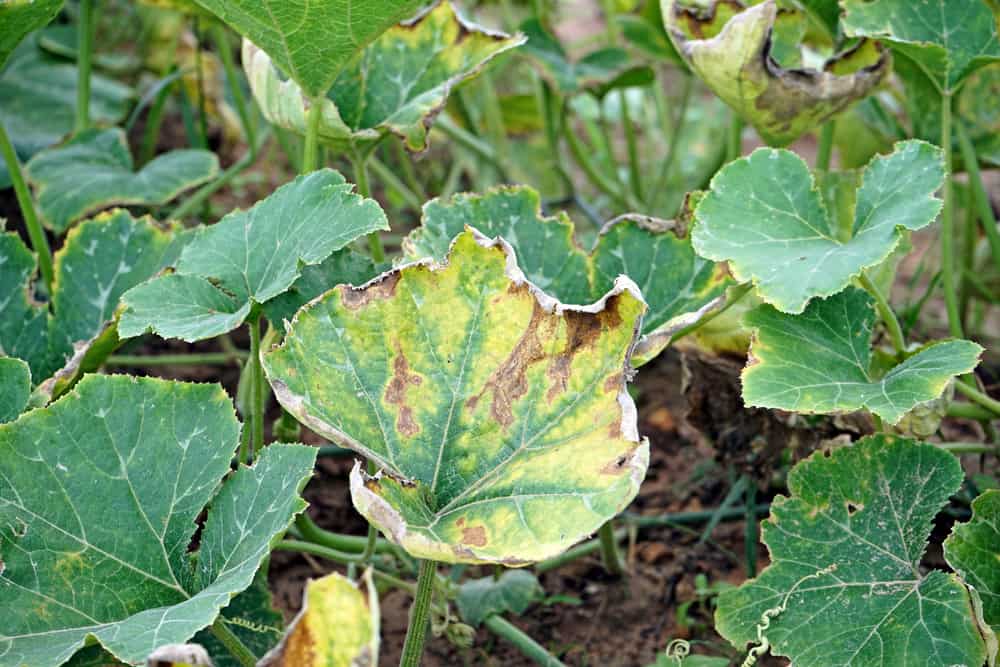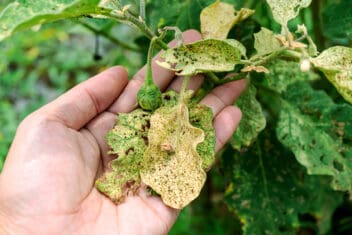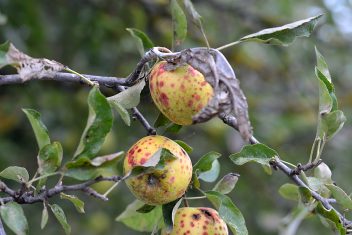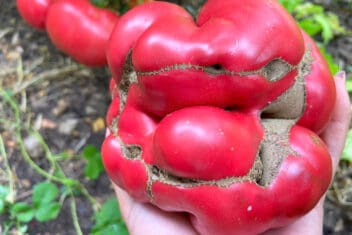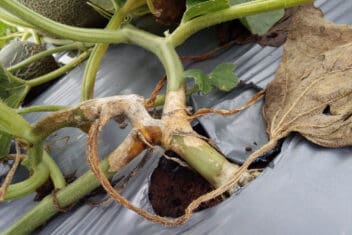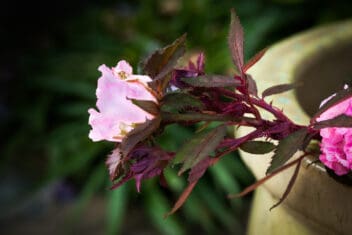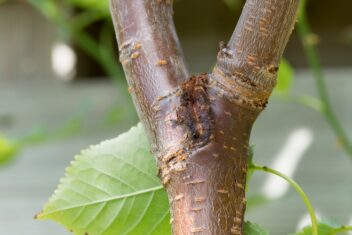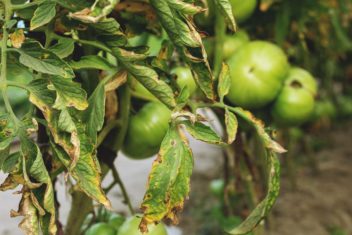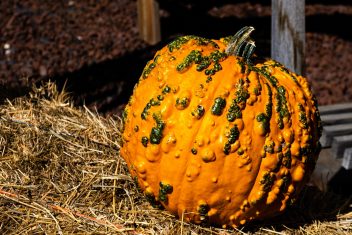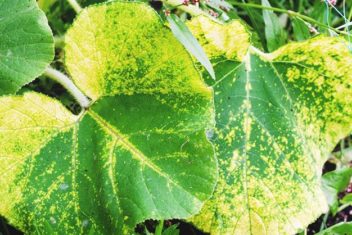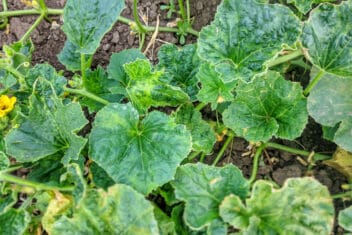Pumpkins are vulnerable to a significant number of diseases. In fact, you’re more likely to contend with fungal or bacterial pathogens than insect or animal pumpkin pests.
Please keep in mind that although this is a long list of all the things that might go wrong, that doesn’t mean they all will. You might get through several growing seasons without any pumpkin diseases rearing their filthy little heads.
Here are some of the most common ones you may encounter and how to deal with them.
1. Powdery Mildew
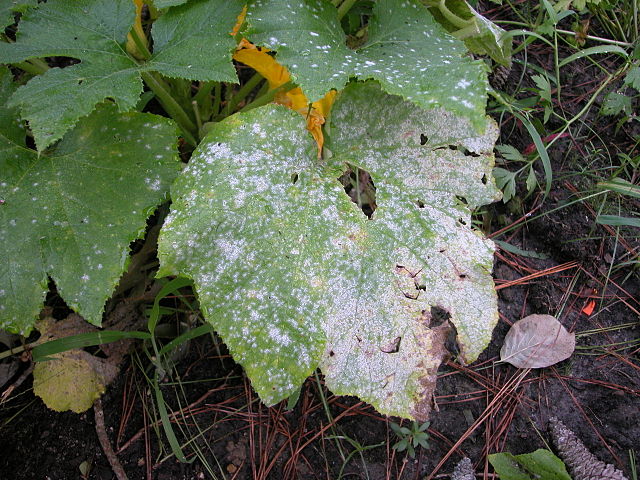
This has been my greatest bane when growing any kind of cucurbit. It’s particularly insidious because powdery mildew spores can stay in the soil indefinitely.
Destroy plants that exhibit early symptoms, and do a garlic drench to kill off pathogens. Then till the soil well on hot days to let the sun sterilize the soil, and don’t plant any cucurbits there for about three years.
2. Downy Mildew
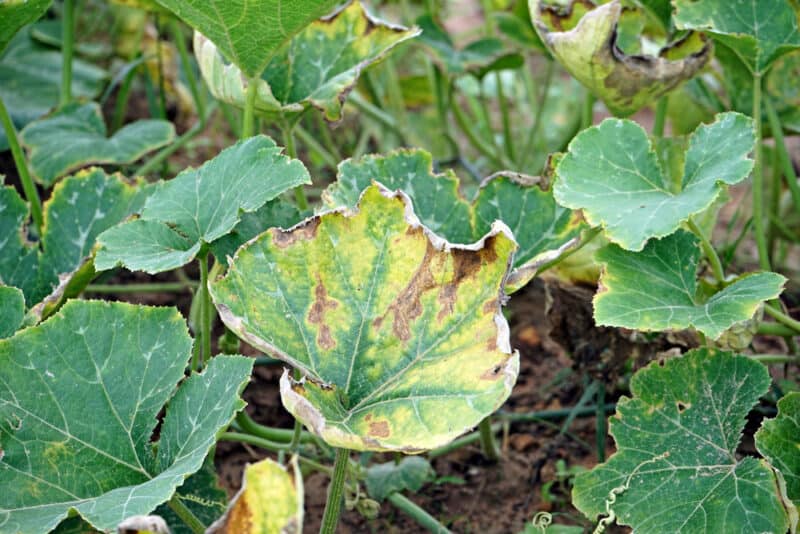
Unlike powdery mildew, which is a fungal disease, downy mildew is an oomycete. This means it’s rather like a fungus-algae hybrid that responds well to some fungicides. That said, your best bet is prevention rather than cure.
To avoid soil-borne pumpkin pests, grow your cucurbits vertically rather than on the ground. We grow ours up trellises or over sturdy tomato cages. Rotate crops regularly, and destroy any plant matter that looks fuzzy.
3. Anthracnose
Anthracnose is particularly heinous as far as fungal diseases go. It primarily affects twigs and leaves, but its dark, sunken lesions can also appear on fruit.
This blight thrives in cool, wet weather, so Zones 3 through 6 tend to be most affected. You can try to prevent it by rotating crops, sterilizing your tools, and spraying the area with copper fungicide and neem oil.
However, all you can do is prune, pull, and burn when and if it shows up.
4. Angular Leaf Spot
This is a bacterial disease that obliterated a strawberry crop on my land about nine years ago. There’s really no cure for it, making it one of the more devastating pumpkin pests you might encounter.
If it shows up, all you can do is tear up and destroy the affected crop. Then dig out, sterilize, and dispose of the soil in that area.
5. Pumpkin Mosaic Virus
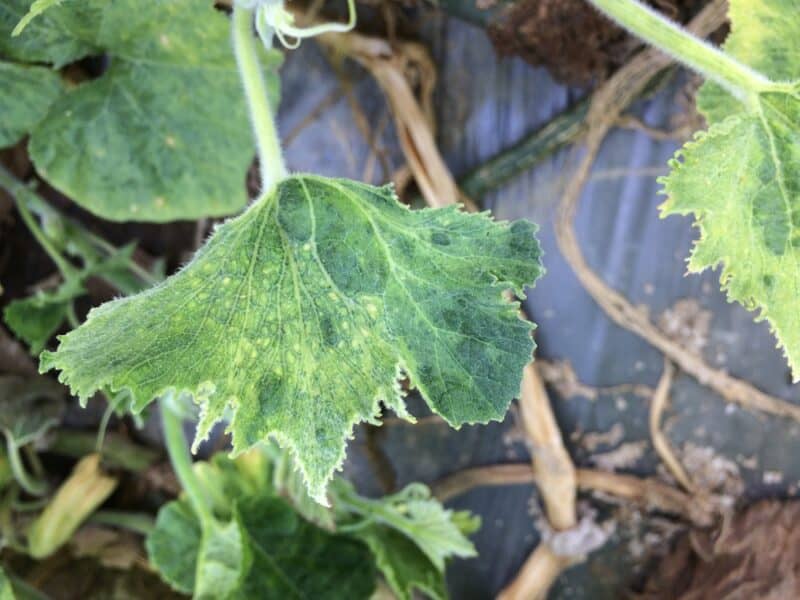
If your pumpkins are striped green and yellow, and have yellow mottling on their leaves as well, then you’re likely dealing with pumpkin/squash mosaic virus.
It’s untreatable, but you can try to prevent it by rotating crops regularly, keeping the surrounding soil clear, and reducing insect activity.
Mosaic viruses are often spread by aphids, so eliminate them with neem oil or diatomaceous earth asap. If any of your plants do get affected, pull them up and burn them.
6. Cucumber Mosaic Virus
Although this is a slightly different mosaic virus, it manifests similarly to the one mentioned above. As such, both the prevention and treatment are similar. Your best bet is to buy seeds that are virus resistant and don’t save seeds from any blighted plants.
7. Verticillium Wilt
This is another one of my most hated pumpkin pests because there’s literally nothing you can do to treat or heal it. Your only hopes are to buy vert wilt-resistant cultivars and rotate your crops religiously.
Resistant plants will be labeled VR.
If and when it shows up, tear everything up and burn it.
8. Gummy Stem Blight
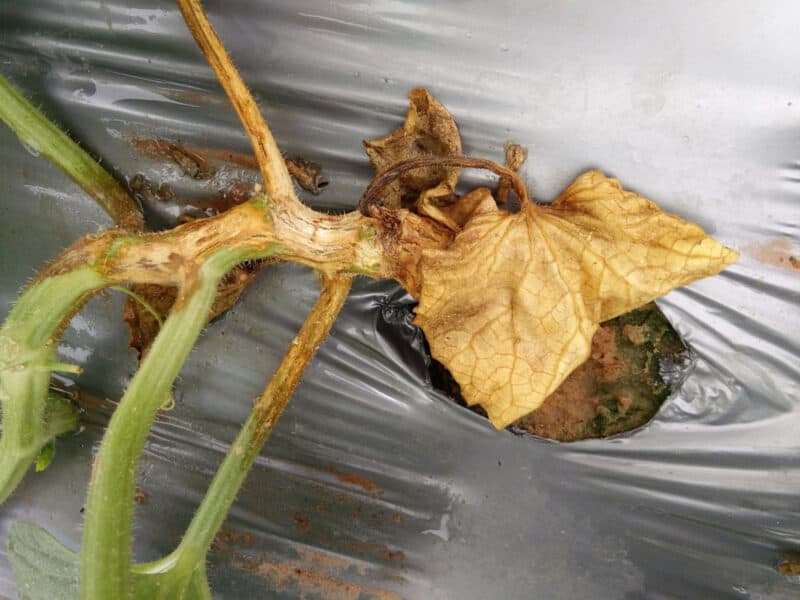
I had never heard of this blight before, but apparently, it only affects cucurbit plants like pumpkins, squashes, cucumbers, and melons. It’s caused by a fungal pathogen called Didymella bryoniae (anamorph Phoma cucurbitacearum).
It manifests as dark, circular lesions that spread out and rot the entire plant. There’s no treatment for it, so destroying your crop is the only option if it appears. Then treat the area with a fungicide, and don’t plant cucurbits there for five to seven years.
9. Sclerotinia Rot
Most pumpkin pests are fungal in nature, and this is no exception. Sclerotinia (Sclerotinia sclerotiorum) is also known as “white mold” or “cotton mold,” as it manifests as white, puffy growths on plants.
It thrives in cool, wet weather, so aim to plant your crops once the season really heats up. Keep the soil free from detritus, and offer your plants plenty of space: more airflow results in healthier plants.
This fungus responds well to copper fungicide treatment, but be sure to rotate crops and destroy affected plants as needed.
10. Fusarium Crown and Foot Rot
This blight thrives in low-pH soil and can affect nightshades and other fruiting plants, as well as pumpkins, melons, and cukes. Much like fusarium wilt, it most often manifests in damping-off disease or “failure to thrive.”
Since there’s no treatment for it, all you can do is till and sterilize the soil as best you can, keep all garden implements sterilized and clean, and rotate crops annually.
11. Phytophthora Blight
As far as pumpkin diseases go, this one is particularly heinous. It can make your plants look waterlogged and wilty, and will form white, yeast-like blooms on the vines and fruits. It thrives in hot, humid weather and can “melt” the fruits right off your vines.
There’s not much you can do to treat it once it appears other than pulling up and burning your plants. That said, you can try to prevent it from taking hold.
Grow your pumpkins in raised beds rather than in the ground, and elevate them further with lattices. Rotate crops annually, and treat the area with copper fungicide if needed.
12. Septoria Leaf Spot
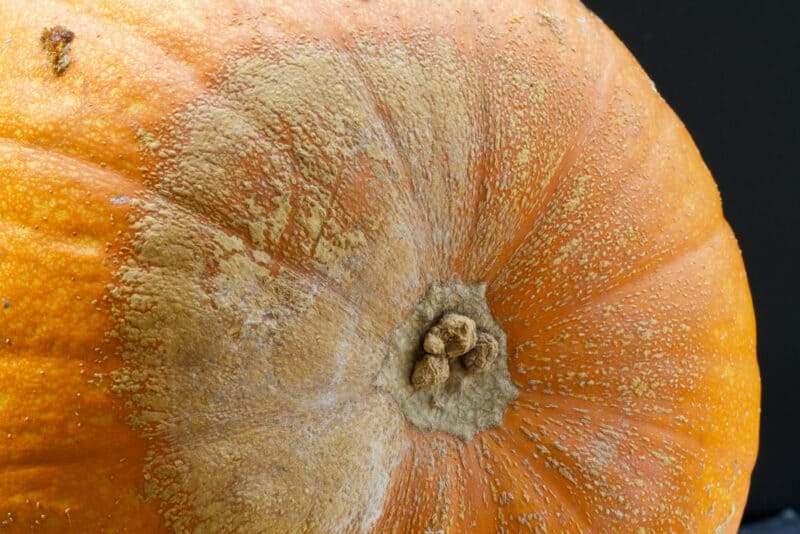
This is one of the few pumpkin diseases that affects both the fruits and the leaves. It first appears as yellow-white “pimples” on pumpkin leaves before spreading onto the fruits.
The good news is that it responds well to broad-spectrum fungicides. Additionally, if you check your plants daily for possible issues, you can snip off and burn any affected leaves before it can spread.
13. Southern Blight
Southern rot is caused by a pathogen known as Athelia rolfsii. It likes hot, damp weather and easily travels from one area to another on one’s shoes or clothing. It can also be transferred via contaminated garden implements.
It manifests as round growths on the low erstems, which burst and cause lesions that eventually lead to plant death.
There’s no real treatment for it other than destroying affected plants. You can, however, take preventive measures.
Since it thrives in acidic soil, you can try raising the pH level to make said soil inhospitable. Additionally, some studies have shown that adding rye-vetch green manure and aged chicken guano to the soil reduces its spread.
Your best bet, however, is to solarize the soil to 122°F/50°C in the top two inches to kill off this pathogen. Rotate crops regularly, change and sterilize shoes before entering your pumpkin patch, and sterilize your gardening tools with bleach solutions.
How to Avoid Diseases
There are tens of thousands of issues that have the potential to afflict humans, but we’re unlikely to contend with all of them in a single lifetime, right?
Your best bet for avoiding the issues mentioned above is to take preventive measures. Ensure that your soil is in excellent health, and buy seeds (or seedlings) resistant to various pathogens.
Enclose your patch with a sturdy fence, do some smart companion planting, and then be vigilant as your plants grow so you can destroy any that show early signs of disease.
With a bit of luck and diligent care, you’ll be preserving all manner of soups, pies, and seeds once autumn rolls around.
